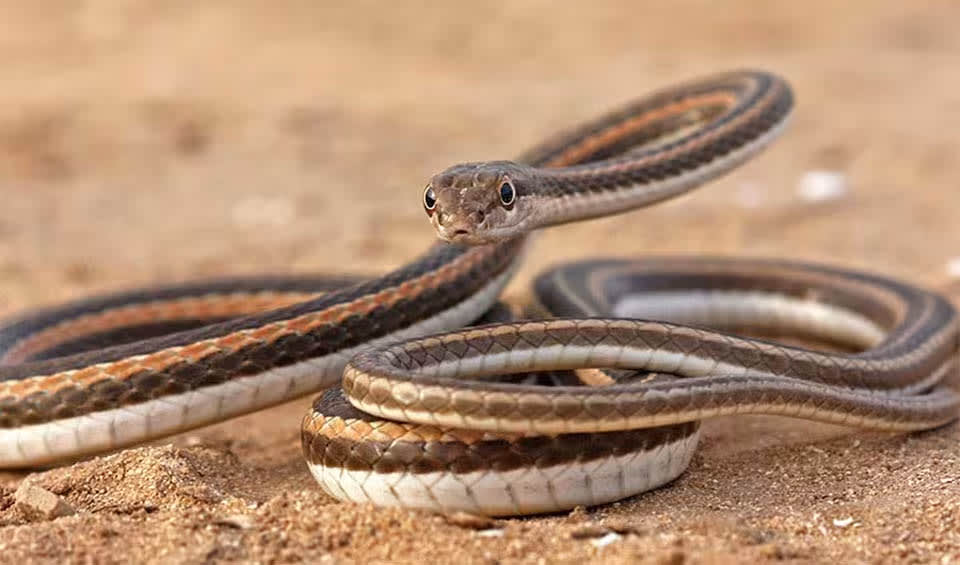Psammophiidae – Sand snakes
Capable of creating intricate tunnel systems beneath the surface of the sand
Comprises a diverse family of non-venomous snakes and boasts a global distribution across various arid habitats, including deserts, savannas, and scrublands. These adaptable serpents are well-suited to life in sandy environments, exhibiting specialized morphological and behavioral traits tailored to their unique habitats.
Psammophiidae has flattened heads and bodies, which aid in maneuvering through loose sand and navigating their sandy surroundings with ease. Additionally, these snakes possess enlarged nasal cavities and reduced eyesight, reflecting their reliance on olfactory cues rather than visual cues to locate prey and navigate their environment.
Despite their reduced vision, Psammophiidae possess a keen sense of smell, which they use to track down a variety of prey items, including small rodents, lizards, and insects. Their specialized adaptations for life in sandy habitats allow them to thrive in environments where other species may struggle to survive.
Sand snakes exhibit a remarkable diversity in morphology and behavior. Some species are highly specialized burrowers, spending the majority of their time underground and emerging only to feed or bask in the sun. In contrast, other species are more active and may frequently move across the surface of the sand in search of prey or suitable basking spots.
Additionally, some species within Psammophiidae exhibit arboreal tendencies, climbing trees and shrubs in search of prey or escaping potential predators. This behavioral flexibility further underscores the adaptability of sand snakes to a wide range of habitats and ecological niches.
Genera in this family
While not venomous to humans, these snakes may be defensive when threatened
Has mild venom and rear-fanged anatomy
One of the fastest snakes in Europe — sometimes covering significant distances in short bursts




